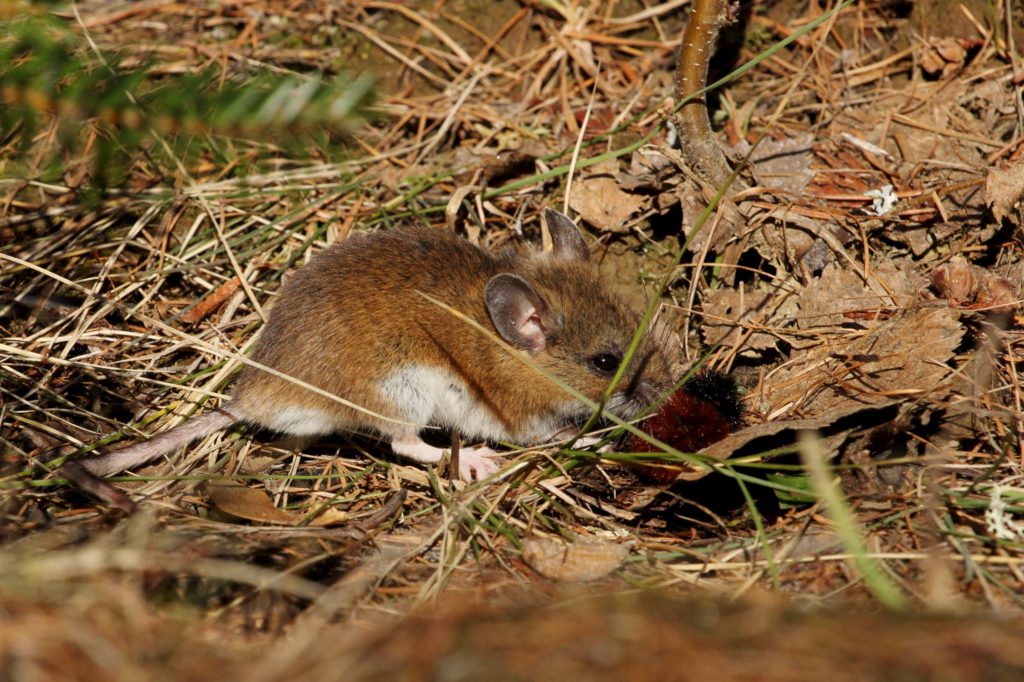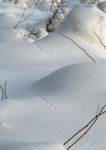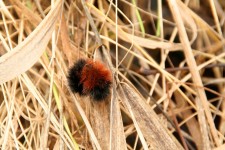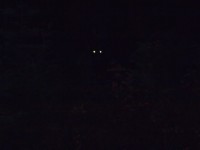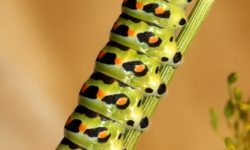Out of the corner of my eye, I caught movement of something on the ground. I slowly turned and saw a mouse. Most mice I see run away at the slightest movement but this mouse allowed me to lift my camera up to my face. Click! I took my chances and moved closer. Click! This mouse was preoccupied with something under a leaf and didn’t mind me being within five feet of him.
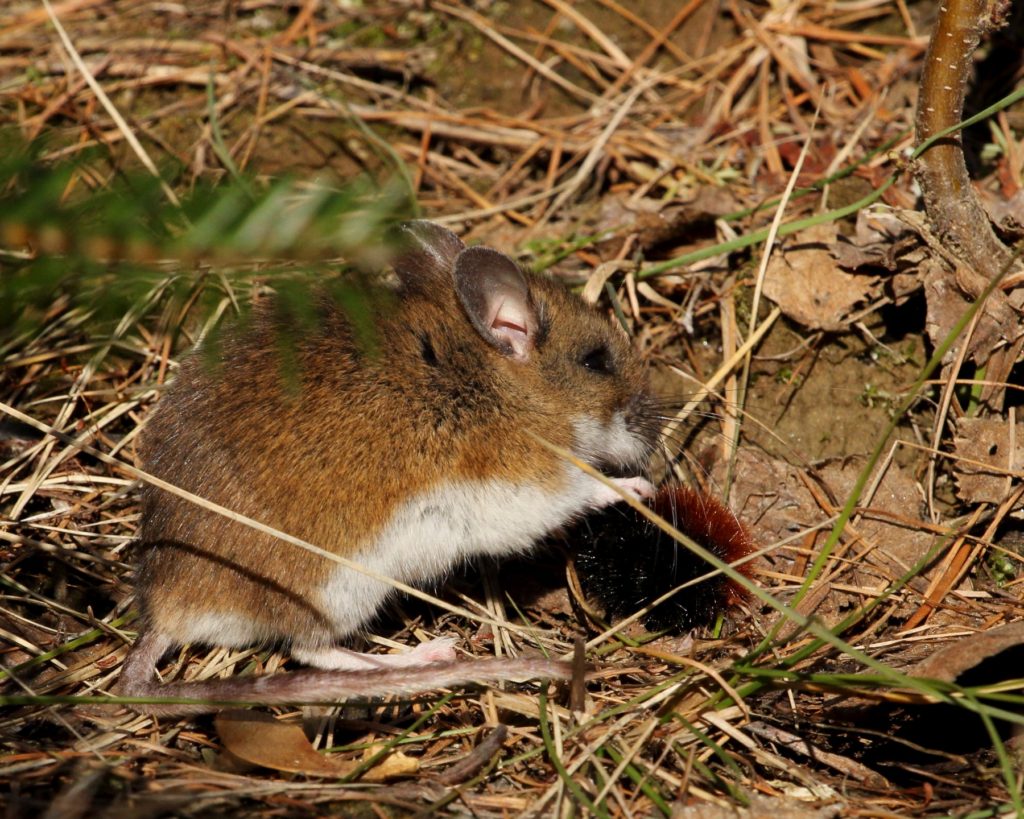
What was that mouse after? He pulled a curled up woolly bear caterpillar from under the leaf! The mouse pawed at the caterpillar but couldn’t find a good place to bite. He left the caterpillar and began searching for seeds instead.
Did you know that mice eat caterpillars?
American deer mice (Peromyscus maniculatus) eat an assortment of food–insects, other invertebrates, seeds, grains, berries, flowers, nuts and fungi. Deer mice have been observed opening cherry pits to access the kernel inside. Like snowshoe hares, deer mice practice coprophagy which means they eat their own feces.
However, seeds and invertebrates are the main food sources for deer mice. One mouse can consume over 200 Douglas-fir seeds in a single night.
Since American deer mice are active year-round and don’t hibernate, they cache food for winter. A winter cache can contain nearly three quarts of food. I’m guessing this mouse was out of food since the snow had just melted from around its burrow.
As for the mouse, he must of been hungry because my kids were able to follow him at a respectable distance while he searched for seeds.
